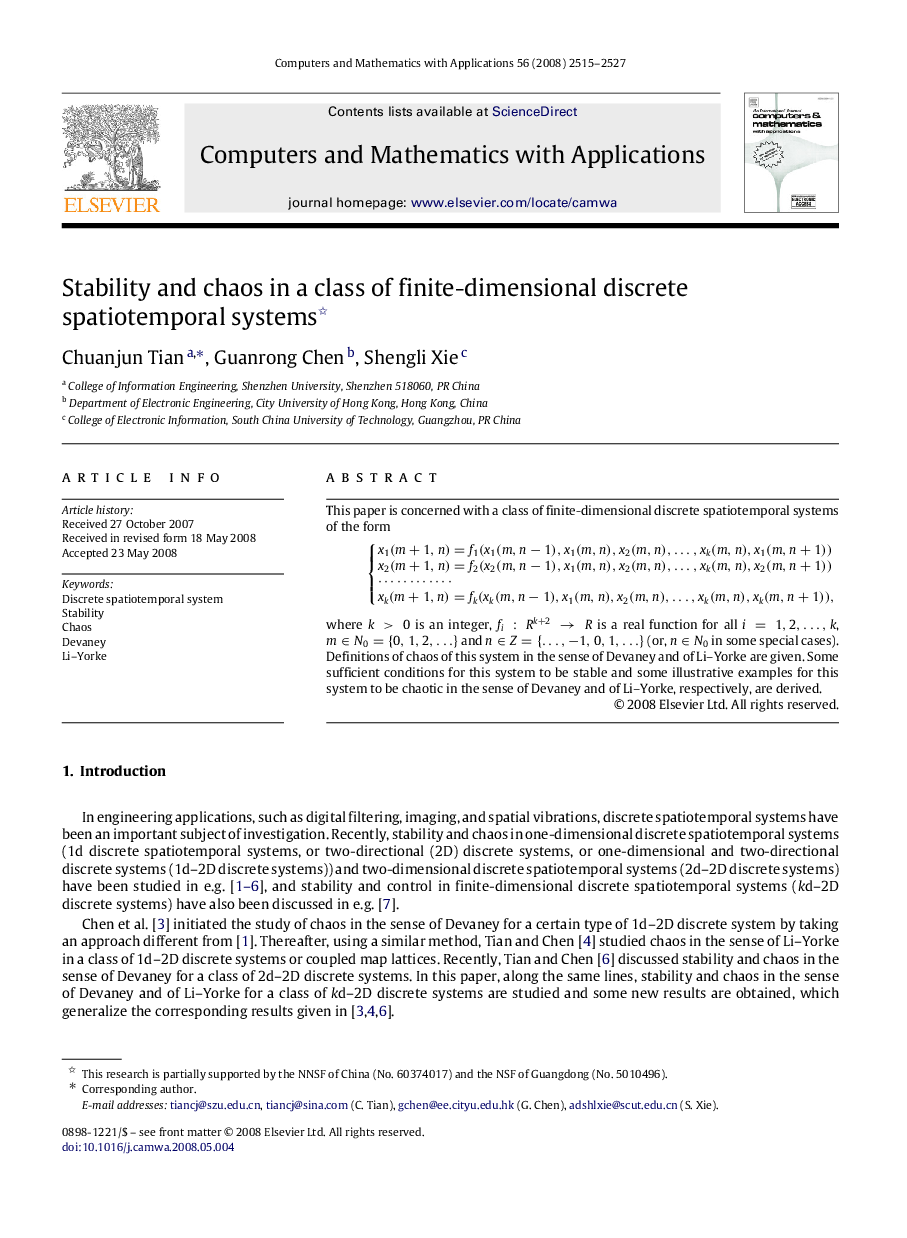| Article ID | Journal | Published Year | Pages | File Type |
|---|---|---|---|---|
| 469751 | Computers & Mathematics with Applications | 2008 | 13 Pages |
This paper is concerned with a class of finite-dimensional discrete spatiotemporal systems of the form {x1(m+1,n)=f1(x1(m,n−1),x1(m,n),x2(m,n),…,xk(m,n),x1(m,n+1))x2(m+1,n)=f2(x2(m,n−1),x1(m,n),x2(m,n),…,xk(m,n),x2(m,n+1))⋯⋯⋯⋯xk(m+1,n)=fk(xk(m,n−1),x1(m,n),x2(m,n),…,xk(m,n),xk(m,n+1)), where k>0k>0 is an integer, fi:Rk+2→Rfi:Rk+2→R is a real function for all i=1,2,…,ki=1,2,…,k, m∈N0={0,1,2,…}m∈N0={0,1,2,…} and n∈Z={…,−1,0,1,…}n∈Z={…,−1,0,1,…} (or, n∈N0n∈N0 in some special cases). Definitions of chaos of this system in the sense of Devaney and of Li–Yorke are given. Some sufficient conditions for this system to be stable and some illustrative examples for this system to be chaotic in the sense of Devaney and of Li–Yorke, respectively, are derived.
